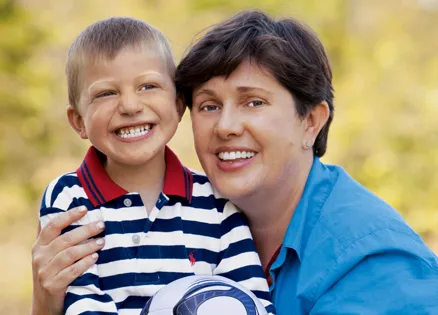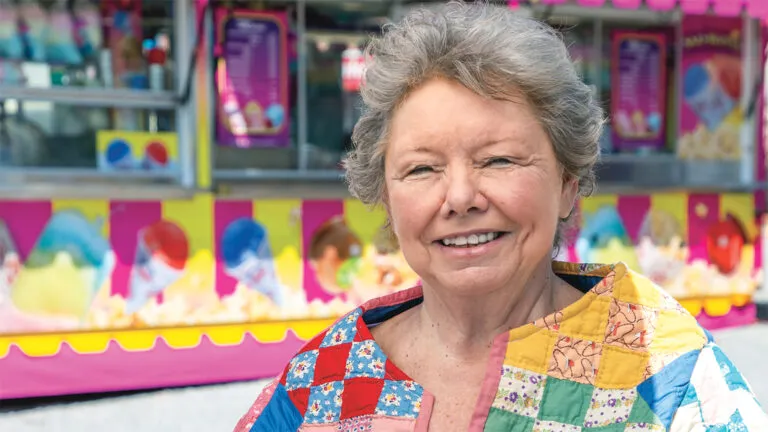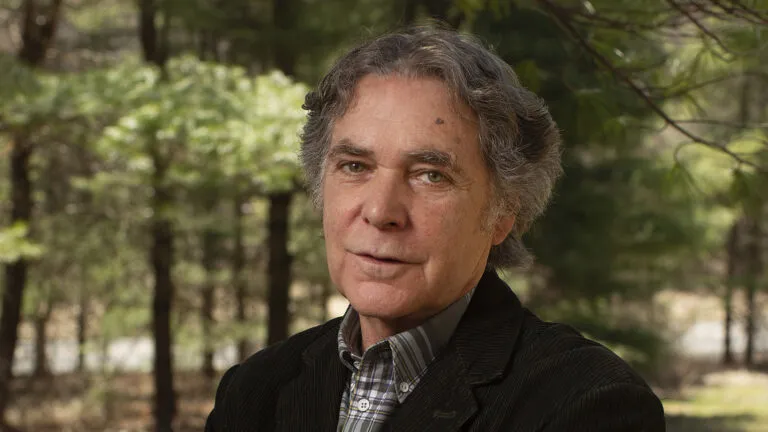The house was quiet. It was a spring day in 2011, mid-morning. My two older boys were at their preschool. Mike, my husband, had left for work hours ago. And Matthew, my youngest, my precious two-year-old, had just gone down for a nap.
I sat at my computer. I clicked over to the Facebook page that had become one of my go-to’s, a page for parents of children with congenital heart defects. Kids like Matthew.
It took a moment for me to start reading without feeling distracted, without worrying whether Matthew was eating enough to keep growing, to keep his heart from failing. I wanted to understand this ailment, to give some meaning to these families’ suffering, to somehow find a ray of hope.
“Our daughter died three days after we brought her home from the hospital,” one post read. “We never knew about her heart defect. Until it was too late.”
There were so many posts like that. Families whose babies never had a chance because no one realized anything was wrong with them. The saddest thing was, it didn’t have to be that way.
People had posted that a simple test, a sensor placed on a newborn’s finger, could measure the baby’s pulse and blood oxygen level, and give an instant indication of a possible heart abnormality— the most common of all birth defects—and, most important, a chance for corrective surgery.
But most hospitals didn’t screen newborns for this. Only two states—Indiana and New Jersey—had passed laws requiring the test. In Indiana, a mother had pushed for the change—after the death of her baby girl at five days old.
I couldn’t imagine her sorrow. It had to be unbearable. And yet look what she’d done…
I heard Matthew stirring in his bedroom. We’d been so blessed. Even now the memory of the grim discovery during a routine ultrasound—the thought of what might have been—made my chest tighten.
“Your baby has a problem,” my obstetrician said, his face drawn. “The right ventricle of his heart hasn’t developed. He has only half a heart.”
How could this be? I was 23 weeks along. Everything had seemed fine, no different from my first two pregnancies.
“He’ll need multiple surgeries,” the pediatric cardiologist told us later that day. “But even that may not be enough. It’s going to be a major challenge for all of you. I’m sorry I can’t be more hopeful.”
For the next four months Mike and I prayed. I prayed for a miracle. For strength. For comfort. Most of all, I prayed for understanding. I’d always believed that God has a reason for everything that happens. But what good could possibly come from this?
My care was transferred from my local doctor to a specialist at Columbia-Presbyterian Hospital in New York City. Mike went with me every other week for tests. But the prognosis never changed. Our only hope was that the baby would live through the surgeries.
Still, what would his life be like? Would he be frail? Would he be able to run around with his brothers? “I wish I could tell you,” the doctor answered. “But there are a lot of unknowns. It’s important, I think, to stay focused on the present.”
I needed something more than that. Something I could cling to. Anytime I couldn’t feel the baby kicking, my worries went haywire. Was he okay? How was I supposed to know?
Then one day a word came to me, one that lingered in my mind. That night, when Mike came home from work, I said, “I thought of a name for the baby.”
“Me too,” he said, looking surprised. “What do you think of Matthew?”
“How did you know?” I said.
We looked it up in our baby name book. “Gift from God,” I read.
I said a new prayer: “Dear God, I’m so scared. But I know Matthew’s in your hands. All I can do is trust in you.” I felt a sense of peace wash over me. God was at work in Matthew’s life.
Matthew was born a few weeks later on August 6, 2008. A nurse rushed him to the neonatal ICU before I could even hold him.
A team of surgeons and nurses performed the intricate job of bypassing the right side of our son’s heart, enlarging his atrium and ventricle and disconnecting the blood return in order for it to take on the workload of a whole heart.
“It’s vital that he grows at a normal rate,” the doctor said when we were finally able to take him home, a whole month after he was born. “The challenge is that with his heart working twice as hard, he’ll need more calories. But he’ll also be tired, so he won’t want to eat. We’ll weigh him once a week.”
Caring for Matthew became my sole focus. For the first six months I fed him breast milk every two hours, coaxing him to eat as much as he could. Mike was a huge help, seeing to our older boys, Michael and Ryan, and doing the chores. Still, it was exhausting.
Before the boys were born, I’d worked as a hospice nurse, but this was stress I’d never experienced before. Some weeks Matthew barely grew at all, or worse, lost weight. Those were the times I felt most alone. Wasn’t I doing enough? What more could I do?
At six months Matthew weighed 12 pounds, eight ounces. The doctors were cautiously encouraged. We’d reached a milestone. He was ready for his second operation in early 2009.
The phone rang a few days before the surgery. “Hi, my name’s Erica,” the caller said. “My daughter Faith was born with a heart defect and, well, our doctor suggested I call you since your son will be going through the same surgery.”
She gave me advice on what to bring to the hospital and where to stay. What I appreciated even more was talking to a mother who knew what I was going through.
Erica was my connection to this world I was now a part of yet understood so little about. I’d never known how common congenital heart defects were.
I hoped Matthew and Faith would have playdates, become friends as they grew older. But it wasn’t to be. Faith died just months after her second birthday.
Now in my study at my computer I thought of how much each moment with Faith had meant to my friend Erica, how much each day meant to a parent of a child with a heart defect.
And these Facebook posts, from families left to wonder what might have been. They had never seen that first smile, fed their sweet babies their first bite of rice cereal. For want of a simple test.
I knew what I had to do. I could see God’s hand so clearly at work. He’d given me Matthew. Now he was showing me a way to help give other children with heart defects a chance at life.
I called the mom in Indiana who’d gotten the law passed there requiring newborns to be tested for heart defects. She gave me tips on media coverage.
“Just tell your story,” she said. “But it’s not easy. You’re going to need to tell it over and over.” I researched who to contact at the Connecticut legislature and mailed letters.
But I knew it had to be more than just my story. I wanted the law to be named in memory of Faith. A few weeks later I met with my state senator. He listened, nodding encouragingly.
“You’ve got my vote,” he said. “But you need to understand. These things take time. First it has to go to committee and sometimes it takes years before they’ll even hold a hearing.”
Years? “This can’t wait that long,” I said. “We need this law now.”
But what could I do? I was just a suburban mom with three young children, not a lobbyist.
“You need to get more people involved,” a friend said. “Start a nonprofit. Raise money and get the word out.”
I didn’t know how to do that, but I found other people who did. I used my contacts from my nursing days and doctors I’d met through Matthew. We called our organization Matthew’s Hearts of Hope. Our purpose: to raise awareness of congenital heart defects and support research on CHD.
At a craft fair I met a woman who made necklaces with beautiful ceramic pendants. “Could you design one with two hearts?” I asked. I couldn’t believe my eyes when soon afterward she showed me the pendant: a whole heart covering half a heart.
I ordered 100 of them with Matthew’s initials on the back to sell to family and friends who donated to our organization. Then 100 more. Soon it seemed as if women all over town were wearing them.
In August 2011 Matthew went in for his third open-heart surgery. He was in the ICU for six long days recovering. I couldn’t bring any of his toys. There was nothing I could give him to lift his spirits. I felt bad for him and for the other kids. “They need something to make them smile,” I said.
“What about pillows?” a nurse said. “Heart pillows.”
Everyone loved the idea. Matthew’s preschool teacher offered to buy fabric. The whole school pitched in.
That’s where I was that day last February, in a room filled with kids stuffing heart pillows, when the state senator’s office called on my cell phone. “Marie, your bill is going to be considered by the committee. They want you to testify at a hearing.”
Matthew, an active little boy who loves swimming and playing soccer with his brothers, went with me. The bill passed out of committee unanimously, then the House and Senate. On May 8, 2012, Connecticut became only the fifth state to require newborn screening for heart defects.
It’s very possible a child’s life has already been saved because of Matthew and Faith’s Law. People want to give me the credit. Yet I know it was God’s hand that moved mine.
Download your FREE ebook, True Inspirational Stories: 9 Real Life Stories of Hope & Faith





